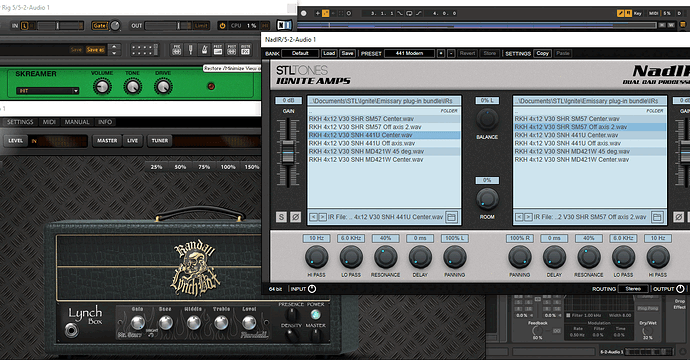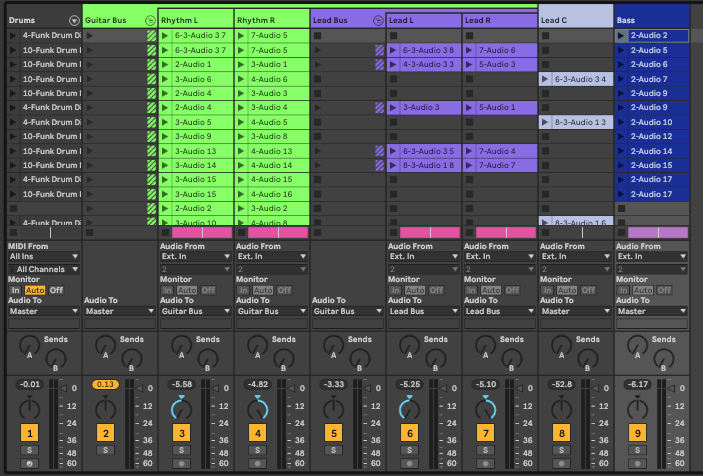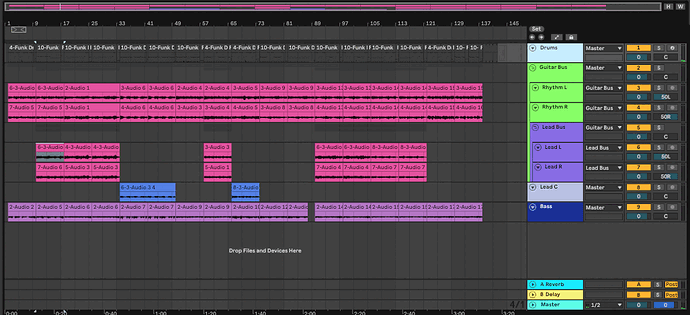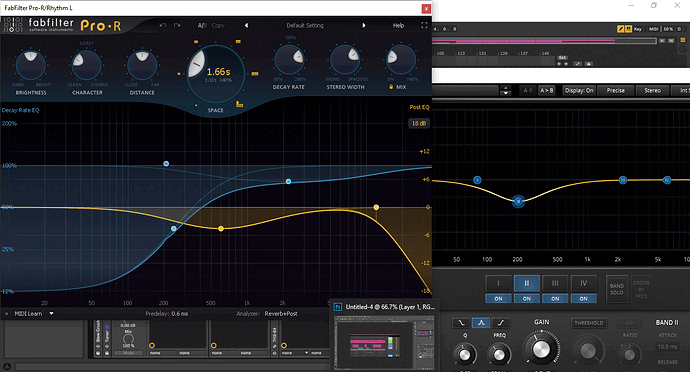This stuff can be looked up online in much greater detail than this, but this is my process.
If anyone needs inspiration on processing, I pulled up a track (listen here, or below) and decided to share the effect chain (and effects used) on the main rhythm guitars.
https://soundcloud.com/agentslimepunk/the-simulation2
In fact, I think this was essentially used on all 5 guitars in this track, just with some different EQ curves and possibly a cab change or two.
In a nutshell, you basically just want to have an amp (the guts) going into a cabinet (the speaker). Everything else is basically just there to beef up your sound, which can include distortion (typically before the amp, as seen with guitar pedals in real life), reverbs after the distortion (but go easy, willya?) and since we have the power, maybe even some EQ and compression way after the ‘guts’ because we also have the power of mixing in a DAW.
This is the traditional variety though. You have a DAW, so don’t be afraid to go nuts. Switch the order. Once you know the ‘rules’, it’s extremely rewarding to break them.
Here’s the meat and potatoes opened up: Guitar rig (distortion), TH3 (amp), NadIR (cabinet).
Again, this is the traditional approach because I was making melodeth and I wanted it to sound somewhat realistic. As you can see, the only thing(s) left on the chain were a simple reverb followed by an EQ, which will be track-specific for anybody’s individual mix, and probably doesn’t need to be shown.
Onto my routing situation…
As you can see, I use strictly basic L-C-R panning, dual tracking on the rhythm, mostly dual tracking on the lead, and sometimes (as you’ll see soon) even quad tracking. This is a somewhat traditional approach, since I’m not going for anything experimental. Some ‘traditional’ (metal) bands have been known to go as high as stacking 4 rhythm tracks per channel (left and right, respectively), so even in a fairly normal scenario you can go kind of nuts.
Stacking guitars like so can result in a ‘blurry’ sound with less transients, which a lot of bands find desirable. Think about how different Periphery sounds than say… Poison?
Last but not least, check out what I did with the arrangement (hey, you can even play the song and look at this at the same time. The future is here!). You can see that I scattered dual leads all around, but strangely I also quad tracked rhythm in there without even having to open up more channels! Some of the leads actually have me playing the base rhythm and then trailing off with a lick, but don’t tell anyone my shitty secrets, please!
There are also some center leads coming and going, and for the sake of not overcrowding the mix they were obviously written and arranged separately.
Since we’ve come this far, here’s the example of FX I have per channel. Nothing crazy, just some attenuation with the EQ and a tiny bit of reverb (which is admittedly acting as a short delay) to make it sound like the cab was reflecting off of something in a potential room with a mic held up to it. It sounds just a little more intimate with a small amount of “pzzz” coming off of it.
I hope this clarifies some stuff, or maybe inspires someone to try it out… even with synths. NaDIR was free, TDR Nova (the EQ) was free, and most of the stuff used on busses / etc were just native plugins.
Also, there are plenty of free distortion units, amps and cab sims scattered across the web. Some bands have even been known to compile an entire ‘freeware sound’ that sounds legit as fuck.




